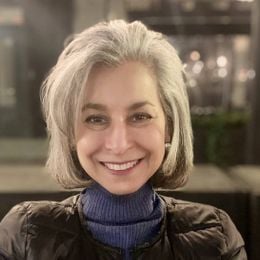The Bright Spots and Challenges of Growing Older
A candid talk with Paul Irving, author of 'The Upside of Aging'
Anyone who even vaguely follows the news is familiar with the impending shift in the nation’s (and the world’s) demographics, as millions of boomers move into late middle life while birth rates diminish.
In his newly released anthology, The Upside of Aging, analyst Paul Irving makes the argument that we have the chance to ensure that the aging of the world does indeed have an upside.
Irving became a student of the new aging, like so many of the field’s big thinkers, as he and his circle were getting older.
Approaching 60, Irving pivoted from his perch as CEO and senior partner in a prestigious law firm into work focused on giving back to society. He spent a year at Harvard University in its Advanced Leadership Institute and then took on his current position: President of the Milken Institute, a Santa Monica, Calif.-based nonpartisan think tank specializing in aging, economic well being and public health.
(MORE: 10 Best Cities for Growing Older)
The Upside of Aging is a fast-paced collection of ideas ranging from personalized medicine to lifelong learning to encore careers to the economics of longevity. I caught up with Irving during his book tour and the following is a condensed version of our conversation:
.inside.311x451.jpg)
Alboher: Since your book is called The Upside of Aging, let’s start with the good news. What are the bright spots you’ve identified?
Irving: Perhaps the biggest upside is that the aging brain and aging people have this collective wisdom, experience, judgment and the opportunity to apply the learnings of their longer lives to solve difficult problems. It’s an extraordinary resource that has to be accessed, utilized and encouraged.
Aging has also presented interesting opportunities for science to contribute to better, longer lives.
We are also thinking more and more about design and development of cities and infrastructure to accommodate aging populations. Good design like this doesn’t just benefit older people — it benefits everyone.
We’re also recognizing the power of intergenerational activity and we need to find more ways to connect older people with life resources to younger populations of need, both in America and across the world.
We’re making progress in these areas, but we have a long, long way to go.
(MORE: 10 Myths About Aging, Debunked)
What are the biggest challenges?
Alzheimer’s is a horrendous disease and a remarkably significant global challenge. Unaddressed, it poses the risk of breaking America and breaking China first. So it’s an extraordinarily important problem — as are the significant risks and costs associated with chronic diseases related to smoking and obesity.
If Alzheimer’s were a disease affecting thirtysomethings, I think there would be a national call to action and our president would send 100 of the smartest scientists in America to Los Alamos to search for cures and say: “Don’t come back until you’ve solved it.”
One of the reasons it’s important to recognize the potential of older people is that it will create more incentive to tackle the diseases associated with aging that can be crippling, not just for individuals and their families, but for society at large.
What else causes you concern?
We need to honestly confront age bias.
Some companies continue to implement baseless mandatory retirement provisions. Yet we all know 75-year-olds with extraordinary energy and 45-year-olds who are disengaged.
In recent discussions about Hillary Clinton, there’s been commentary on both her health and her age. Questions about a potential presidential candidate’s health are relevant and appropriate, but we should celebrate when people actively engage throughout their lives. Age alone is no disqualifier.
(MORE: Are Employers Guilty of Age Discrimination?)
Obviously, not all older people have the ability to lead and work at an intense level, but older people are as diverse as any other population, and negative assumptions about capacity and energy are often wrong. This is an area where bias continues to be quietly accepted — and it shouldn’t be.
You just said ‘not all older people have the ability to work’ and that hits on another big theme of your book: income inequality.
In the United States, a frightening number of pre-retirees are not ready for traditional retirement (even though I think the notion of traditional retirement should itself be retired).
People should be encouraged and enabled to continue to work to the extent they are able because we know that traditional retirement — often meaning withdrawal, disengagement and loss of purpose — is bad for your health and your wealth. But we need to help people repurpose and reposition themselves through lifelong learning, training programs, policy change and confrontation of bias.
For some people, ongoing work will sadly not be realistic. Disease, disability, educational deficits and other challenges may make continued work impossible or impractical. And in those instances, we need social supports and treatment with dignity, including access to good health care, transportation systems and other support resources. We also need to think about new ways of caregiving.
[For more on all of this, Irving suggests looking at his organization’s Best Cities for Successful Aging initiative, which identifies which metro areas are well-positioned to help people age in place and identifies learnings for other communities to follow.]
What are you hoping to accomplish with this book?
It’s incredibly encouraging to know that there are so many extraordinarily talented people across business, finance, public health, nonprofits, philanthropy and education who are recognizing the importance of these issues. I hope to get more people thinking about what we can do on a collaborative basis to move things in the right direction and to do it faster.
With so many people using their longer lives in purposeful ways, it creates an opportunity to change the view of older people, which will in turn improve the environment for older people and empower them to make significant contributions to improve the world for future generations.


